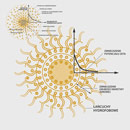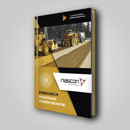The Long Ducker Ride events have captured the interest of cycling enthusiasts across the globe. These events not only showcase scenic cycling routes, but they also promote a sense of community and teamwork among participants. By coming together for a common goal, cyclists can experience the thrill of competition while enjoying the camaraderie that comes with team participation.
As riders prepare for these events, event registration becomes a crucial step in the process. Participants are encouraged to sign up early to secure their spots and to receive important updates about the event specifics. With various routes to choose from, riders can select the challenge that best fits their skills and stamina, making the experience both rewarding and enjoyable.
Whether you're an experienced cyclist looking to push your limits or a newcomer eager to join a team, the Long Ducker Ride events offer something for everyone. Engaging with fellow cyclists and sharing in the excitement of the ride fosters a unique atmosphere that keeps participants coming back year after year.
Preparing for Your First Long Ducker Ride: Essential Gear and Training Tips
Participating in your first Long Ducker Ride can be a rewarding experience. To ensure you are fully prepared, focus on the necessary gear and training strategies that will contribute to a successful event.
Essential Gear
- Bicycle: Choose a bike suitable for long distances. A road bike or hybrid is often recommended.
- Helmet: Always wear a properly fitted helmet for safety.
- Clothing: Invest in moisture-wicking and padded cycling apparel to enhance comfort during prolonged rides.
- Hydration System: Utilize a hydration pack or water bottles to maintain fluid intake while riding.
- Repair Kit: Carry a basic repair kit, including tire levers, a pump, and spare tubes for unexpected issues.
Training Tips
- Start Gradually: Build your cycling endurance by gradually increasing your distance. Aim for a balanced mixture of short and long rides each week.
- Include Interval Training: Incorporate interval sessions to improve your speed and stamina over time.
- Practice on Similar Routes: Familiarize yourself with the cycling routes you will encounter during the event for a smoother experience.
- Join a Cycling Group: Team participation can provide motivation and companionship. Consider finding local cycling groups to train with regularly.
- Stay Consistent: Establish a training schedule that allows you to ride several times a week. Consistency is key to building endurance.
Don't forget to look into event registration details ahead of time, ensuring you meet all guidelines and deadlines. For further inspiration, check out https://harrowhalfmarathon.co.uk/ for more valuable insights related to distance events.
Choosing the Right Route for Your Long Ducker Ride Experience
Selecting the appropriate cycling routes for your Long Ducker Ride is a key aspect of ensuring an enjoyable and memorable adventure. Routes can vary widely in terrain, distance, and difficulty, so it's imperative to align your choice with your skill level and interests.
Start by researching available routes that cater to different preferences. Some may offer scenic views, while others emphasize a challenging ride. Websites or local cycling clubs often provide valuable insights into popular pathways and any potential obstacles, such as road closures or heavy traffic.
Charity rides frequently feature designated routes that accommodate varying levels of cyclists. Participating in these events not only supports worthy causes but also allows you to engage with a community of riders who can share their experiences and route recommendations.
When considering your options, evaluate the distance and elevation gain of each route. If you are new to long rides, it's wise to select a route that allows for gradual climbs and rewards you with enjoyable descents. On the contrary, seasoned cyclists may prefer routes that challenge their endurance and skills.
Before committing to an event registration, familiarize yourself with the route details. Look for elevation profiles and rider reviews to gauge the overall experience. Understanding the conditions of the cycling routes can aid in preparation and help to avoid surprises on the day of the ride.
Finally, don't hesitate to consult with local cyclists or online forums dedicated to cycling. Their firsthand experiences and route tips can provide clarity and enhance your Long Ducker Ride experience.
Long Ducker Rides present unique challenges for participants, often influencing the overall experience. Understanding these challenges can aid in better preparation and successful completion of the event.
One common issue is managing physical fatigue. Proper training before the event is crucial, focusing on endurance-building rides. Gradually increasing distance helps your body adapt and prepares you for the longer cycling routes. Incorporating rest days also allows for recovery, minimizing the risk of burnout.
Weather conditions can significantly impact ride quality. Participants should check forecasts and be ready for various scenarios, from rain to intense heat. Dressing in layers, carrying rain gear, and staying hydrated are important strategies to combat environmental factors.
Another challenge is maintaining motivation throughout the ride. Team participation can enhance experience and encourage resilience. Riding alongside others fosters camaraderie, making it easier to push through tough moments. Setting personal goals during the ride can also help maintain focus and enthusiasm.
Lastly, event registration processes can occasionally be stressful. Ensuring all forms are completed accurately and submitted on time will help avoid last-minute issues. Familiarizing yourself with the event's requirements ahead of time contributes to a smoother participation experience.
Post-Ride Recovery Strategies for Long Ducker Riders
After participating in a Long Ducker Ride, taking care of your body is paramount for optimal recovery. Effective recovery strategies can significantly enhance your performance in future charity rides.
Hydration is one of the first steps. Replenishing lost fluids is crucial. Drink water and consider electrolyte-rich beverages to restore balance.
Nutrition plays a key role in recovery as well. Consuming a meal rich in carbohydrates and protein within an hour post-ride can aid muscle repair and glycogen replenishment. Snacks like bananas, energy bars, or smoothies can be great options.
Rest is equally important. Allow your body time to recover by getting adequate sleep in the days following the event. This helps to restore energy levels and repair tissues.
Gentle stretching can alleviate muscle stiffness after a long ride. Spend some time doing light stretches focusing on the legs, back, and shoulders.
Consider using foam rollers or massage tools to help with muscle soreness. This can improve circulation and accelerate recovery.
Finally, participate in light activities such as walking or cycling at a relaxed pace in the days following the event. This helps maintain flexibility and keeps your muscles active without strain.
Engaging with your team after the ride can also be motivational. Sharing experiences and discussing future charity rides can reinvigorate enthusiasm and foster camaraderie among participants.
By prioritizing recovery, you set the stage for greater endurance and enjoyment in subsequent events.












